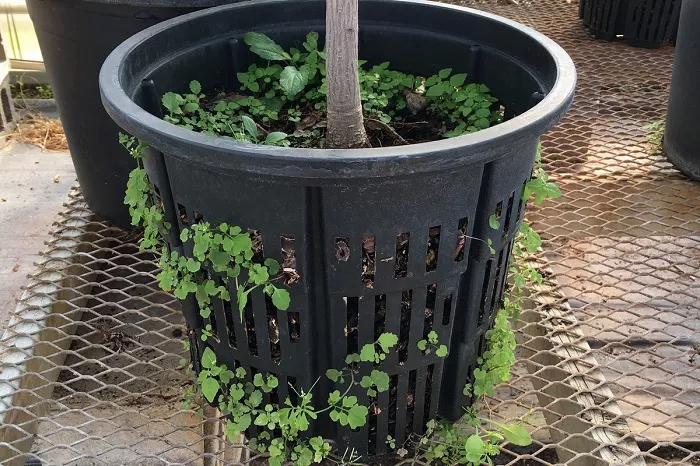Weed management is a significant challenge in greenhouse container production. Weeds compete with ornamental plants for essential resources such as nutrients, water, light, and space in a limited area. This competition can negatively affect plant quality, reduce their market value, and even cause plant death in severe cases.
Weeds not only lower the aesthetic quality of ornamental plants in nurseries and greenhouses but also serve as reservoirs for various pests. These pests include insects like whiteflies and thrips, as well as mites, slugs, and snails. Some weed species, such as woodsorrel (Oxalis spp.) and bittercress (Cardamine spp.), can act as hosts for plant viruses like Impatiens Necrotic Spot Virus (INSV) and Tomato Spotted Wilt Virus (TSWV). These viruses can be transmitted to susceptible ornamental crops by thrips, making disease management more difficult.
Research has shown that weeds like Solanum sarrachoides can harbor Potato Leaf Roll Virus (PLRV), which has been linked to high infection rates in susceptible crops.
In Morocco, Datura stramonium has been identified as a major host for PLRV. Weeds such as Amaranthus palmeri and Chenopodium album have been found to carry Tobacco Rattle Virus, which can harm plants like sugar beets and potatoes. Therefore, removing weeds from greenhouse containers, benches, and floors is crucial for maintaining plant quality and effective pest management strategies.


